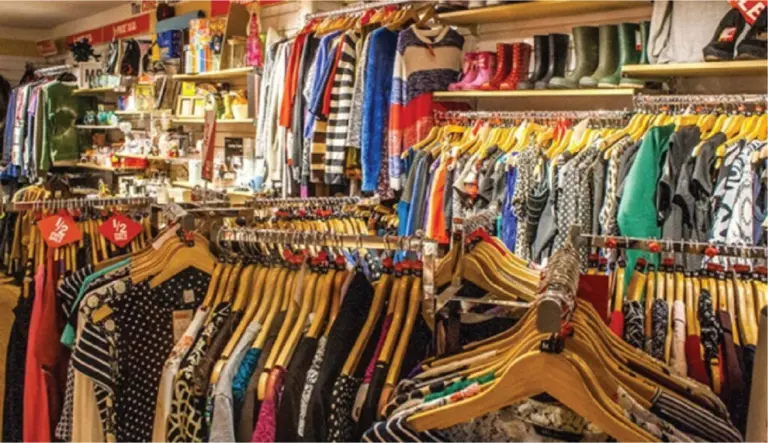Table of Contents
Rethinking Fashion: The Pros and Cons of Circular Clothing Models
In the world of fashion, a new wave of clothing brands is emerging, offering rental, resale, and recycling services to combat the industry’s environmental impact. But are these circular fashion initiatives as sustainable as they claim to be? This article delves into the pros and cons of these models and explores the need for transformative change within the fashion industry.
The Environmental Toll of Fast Fashion:
Before delving into circular fashion, it’s crucial to understand the environmental challenges posed by the traditional fashion industry. From greenhouse gas emissions to waste generation, the fashion industry’s impact is staggering. With the average garment worn fewer than 50 times before ending up in a landfill or being incinerated, it’s time to rethink our approach to clothing consumption.
Circular fashion models, such as rental services, resale platforms, and clothing recycling programs, aim to disrupt the traditional fashion cycle by extending the lifespan of garments. Companies like Nuuly, Anthropologie, and Urban Outfitters offer rental services that keep clothes in circulation for longer periods. Additionally, they repair damaged garments, operate resale platforms, and even upcycle old clothes into new garments. These initiatives contribute to reducing waste and maximizing a garment’s lifecycle.
Circular fashion is not only environmentally beneficial but also a lucrative business opportunity. The Ellen MacArthur Foundation estimates that the circular fashion industry could reach a value of $700 billion by 2030. With sustainability becoming a key consideration for shoppers, clothing brands are eager to tap into this growing market. However, the true impact of these initiatives on the environment remains a topic of debate.
Despite the positive intentions behind circular fashion, there are trade-offs to consider. A study comparing different clothing consumption scenarios found that while resale was better than the traditional baseline, recycling had limited benefits due to energy-intensive processes. Surprisingly, rental services were found to have a higher environmental impact, primarily due to transportation-related emissions. It is essential to scrutinize these models to ensure they truly align with sustainability goals.
Challenges and Limitations:
Circular fashion initiatives face several challenges. The laundry process for rental clothes consumes substantial water and energy resources, while dry cleaning chemicals can be harmful. Clothing recycling programs face obstacles due to the difficulty of sorting and processing different materials effectively. Moreover, many fashion brands still prioritize the production of new garments, hindering the potential impact of resale and rental models.
To truly address the environmental impact of the fashion industry, a radical transformation is necessary. Rather than implementing incremental changes, fashion labels must rethink their entire business models. By prioritizing physical and emotional durability, designing for remanufacturing, and adopting eco-friendly materials, brands can pave the way for circular business models that genuinely minimize waste and consumption.
Brands Making a Difference: Some pioneering brands are taking steps towards sustainable practices. Patagonia, known for its repair services and anti-consumerist marketing campaigns, aims to integrate resale into its business model. Reformation is committed to increasing its resale, vintage, and rental offerings while striving for recyclability and reducing virgin materials in its products. These brands exemplify the shift towards a more sustainable and circular future.
The Role of Policy and Consumer Choices:
While brands can drive change, government policies and regulations play a crucial role in shaping the fashion industry’s sustainability practices. Implementing measures like extended producer responsibility, promoting transparency in supply chains, and incentivizing circular business models can create a supportive environment for sustainable fashion. Consumers also have a role to play by making conscious choices, supporting brands with sustainable practices, and opting for rental or resale options instead of always buying new ones.
To encourage the adoption of circular fashion models, it is essential to educate consumers about the environmental impact of the fashion industry and the benefits of sustainable alternatives. By raising awareness and providing accessible information, consumers can make more informed choices and actively participate in the shift toward a circular economy.
Collaboration and Innovation:
Transforming the fashion industry requires collaboration among various stakeholders, including brands, policymakers, consumers, and technology innovators. By working together, these entities can drive innovation in materials, production processes, and business models. Technologies like blockchain can enhance transparency and traceability in supply chains, ensuring that garments are produced ethically and sustainably.
Circular fashion models have the potential to reduce waste, extend the lifespan of garments, and minimize the environmental impact of the fashion industry. However, it is crucial to evaluate the trade-offs and address the challenges associated with these models, such as transportation emissions and resource-intensive processes. To achieve true sustainability, the fashion industry must undergo a radical transformation, reimagining its business models and prioritizing circularity. Through collaboration, innovation, policy support, and informed consumer choices, we can create a more sustainable and responsible fashion ecosystem for the future.

